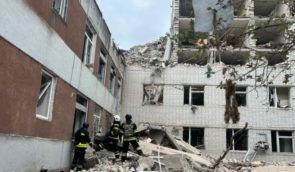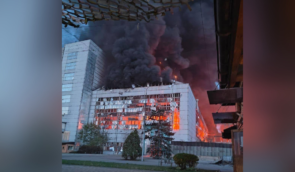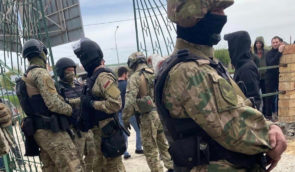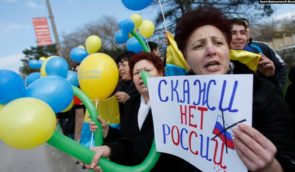Art Therapy to Heal Victims from the ATO
Ukrainian art therapists are looking for ways to provide professional assistance on the state level to those hurt in the ATO, internally displaced and all in need of it.
Experts believe that art therapy is one of only very few methods that “works” when helping people in crisis situations. Art therapy helps to find meaning, improves relations between children and parents, and relieves tensions at work or family.
This was explained during a master class by Victoria Nazarevich, Ph.D., Assistant Professor of developmental and educational psychology at Rivne State Humanitarian University and a board member of the Western Ukrainian Association of Art Psychologists and Art Therapists.
The master class was held at the conference “The Space of Art Therapy: the Art of Life”. It was organized by the Art Therapy Association, where art therapists not only shared their experiences, but also looked for practical ways to help the victims of the ATO, the displaced and others who need psychological support. This was reported on by the correspondent of the Human Rights Information Center.
At Victoria Nazarevich’s master class, participants tried to understand their motivations and formulate their life goals using drawings. For example, they drew freehand lines, circles, geometric shapes, sketches, and so on. Thus they tried to portray their feelings on the theme of “happiness”, “I have to”, “me at work”, “ideal me”, and “me for others.”
Participants then exchanged drawings with partners they trusted, wrote three associations to their drawing, and returned it. Sharing pictures, says Nazarevich, is necessary, because they will then hear from the other person the truth which they won’t say to themselves, and which they may not be ready to take at this stage. It also allows them to be distracted from their own emotions and stereotypes.
Another technique, which allows the participants to determine their desires and express feelings, calls for them to copy a finished picture which was designed based on Jungian archetypes. If the person is not drawing on the whole sheet, draws in a corner, or folds the sheet in half or four times, they want something only 50% or 25%. Nazarevich notes that in recent years, due to the tense situation in the country, the number of such people has increased. But, she is certain that the obstacles are given so that they may be overcome.
“We need to live a full life with or without war. Art therapy has its origin in the concentration camps, when they tried to save children who suffered there with anything they could. Some could only be saved through art therapy. I think that Ukraine should revel in every second, enjoy those moments that we have”, says Nazarevich.
According to her, art therapy is now used more often and professional conferences contribute to this: “I think precisely these meetings help to understand, at the state level, that it is the method that can save. In schools, I think, except art therapy, there are few effective methods. The statistical and diagnostic questionnaires, forms, and tests do not give a real resource. Psychologists intuitively come to the fact that they can use the art therapeutic method in different situations. This is evident from the fact that there are more requests for art therapy at methodological seminars among school psychologists. The methodologists at the district, city, regional levels already understand that this is what is needed right here and now to stabilize the situation”.
Nazarevich said that they have a school of volunteers at the University who work with both the families of victims in the area of the ATO and soldiers. Nazarevich most often applies the method of art therapy in her work with children. Some of her colleagues have repeatedly traveled to training grounds to meet with soldiers.
“I had experience when the soldiers took their children to art therapy classes, patiently waiting for the session to be over, talked to me for another hour, and healed through this process. They get enjoyment out of immersing into childhood, and also having the opportunity to relax. This is very important. I know that our colleagues from Volyn conduct weekly art therapy; there already is an entire school. Moreover, they are trying to get to the state level through the Ministry. These are only the first attempts. I would not say that they are large-scale, but locally they are already present in Ukraine”, said Nazarevich.














